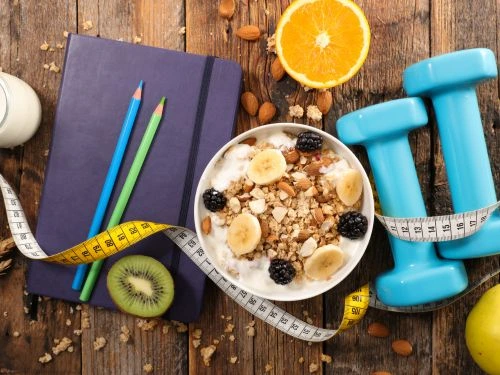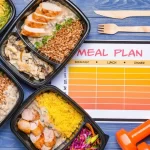Maintaining an active lifestyle does not require radical dieting or complicated meal plans. Small, evidence-based adjustments to daily eating habits can boost energy, speed recovery, improve performance, and make healthy choices easier to keep long-term. The following 10 easy diet changes are practical, science-informed, and suited for busy lives. Each suggestion includes simple actions, helpful examples, and current product or brand recommendations from 2025 reviews and trends.
Top 10 Easy Diet Changes To Power Your Active Lifestyle
1. Prioritize Protein Around Workouts
Protein supports muscle repair and adaptation after exercise. Aim to include a source of high-quality protein within about 30 to 90 minutes after training when possible. Quick options include a yogurt and banana, a lean chicken sandwich, or a protein shake mixed with water or milk.
For supplementation, choose third-party tested powders with transparent ingredient lists. In 2025 product reviews, whey isolates and clean-brand single-ingredient powders are top picks for post-workout protein because they combine high protein per serving with minimal additives. Examples that appeared in recent roundups are RAW Nutrition Whey Isolate and Puori, praised for sourcing transparency and digestibility. Evidence-based guidance also suggests tailoring protein to body size and activity level rather than one size fits all.
2. Add More Whole Food Carbohydrates For Performance
Carbohydrates are the primary fuel for high-intensity activity. Swap refined snacks for whole food carbohydrate sources that also deliver fiber, micronutrients, and satiety. Examples are oatmeal topped with fruit, a sweet potato and black beans, or whole grain pasta with vegetables.
For longer training sessions or repeated daily workouts, include a moderate portion of easily digested carbs after exercise to replenish glycogen. Practical swaps include replacing white bread with sprouted grain slices, choosing brown rice or barley over instant rice, and keeping dried fruit or compact cereal bars in the gym bag for quick fuel.
The 2020 to 2025 Dietary Guidelines and recent sports nutrition reviews continue to emphasize nutrient-dense carbohydrate choices as part of healthy dietary patterns.

3. Hydrate Intelligently With Electrolyte Options
Hydration matters for energy, cognition, and muscle function. For routine daily hydration, water and foods with high water content, such as cucumber, watermelon, and soups, are sufficient. For heavy sweating or long workouts, electrolyte-containing drinks or powders help replace sodium and minerals lost in sweat.
Recent 2025 tests of electrolyte powders and drinks showed a variety of effective options. Practical picks include ready-to-drink beverages like Pocari Sweat or Liquid I.V. for on-the-go convenience, and tablet or powder formats from brands such as Thorne or smaller specialist brands for athletes who want precise electrolyte dosing. For tropical climates or extended sessions, choose formulas that provide sodium plus potassium rather than only sugar.
4. Use Functional Foods For Recovery
Certain whole foods provide compounds that may reduce muscle soreness and support recovery. Beetroot, tart cherry, pomegranate, and watermelon have been studied for benefits on performance and post-exercise recovery due to nitrates, antioxidants, and anti-inflammatory compounds.
Convenient options include concentrated tart cherry shots, beetroot juice shots, and pomegranate smoothies. Commercial products like Beet It Regen Cherry Plus combine beet and tart cherry elements and are designed for recovery support. Incorporating these foods a few hours before or after intense sessions can be helpful as part of a broader recovery plan. Recent systematic reviews examined juice-based supplements for athletic recovery and found promising effects while noting that individual responses may vary.
5. Swap One Processed Meal Per Day For a Balanced Plate
Replacing a single processed meal with a balanced plate can produce outsized benefits over time. A balanced plate includes a palm-sized portion of protein, one to two cupped hands of vegetables, a fist-sized portion of whole grain or starchy vegetable, and a thumb-sized portion of healthy fats.
Meal delivery services and ready-made bowls have improved in quality in 2025. When choosing prepared meals, check for protein content, whole grain presence, sodium levels, and vegetable quantity. Use simple kitchen hacks such as doubled vegetable portions, frozen vegetable mixes, and rotisserie chicken to make the swap quick and affordable.
6. Make Healthy Fats Easy To Use
Dietary fat supports hormones, joint health, and sustained energy. Replace trans and excess saturated fats with sources of mono and polyunsaturated fats. Simple moves include keeping olive oil for cooking and dressings, snacking on mixed nuts, adding avocado to sandwiches, and including fatty fish like salmon twice weekly.
For convenience, shelf-stable options such as single-serve olive oil packets, ready-to-eat nut mixes without added sugar, and canned wild salmon make it easier to include healthy fats during travel or busy days.
7. Plan Simple Protein-Rich Snacks
Having routine grab-and-go snacks reduces the tendency to reach for empty calories. Build a rotation of portable protein-rich snacks such as hard-boiled eggs, Greek yogurt cups, single-serve cottage cheese, shelf-stable tuna packets, and high-protein bars from reputable brands.
When selecting bars, look for at least 10 grams of protein, limited added sugars, and a source of fiber. Recent 2025 product guides emphasize bars that use whole food ingredients and transparent labeling. Keep a small cooler or insulated bag in the car for items that benefit from refrigeration.

8. Time, Caffeine, and Small Carbohydrate Snacks For Performance
Caffeine can enhance focus and power for many athletes when used judiciously. A moderate caffeine dose 30 to 60 minutes before training can improve performance for short high-intensity efforts and long endurance sessions. Combining a small carbohydrate snack with caffeine, such as a banana and coffee or a small energy gel with tea, may provide a fast fuel boost for workouts.
Be cautious with total daily caffeine and avoid using caffeine too late in the day when sleep is needed for recovery. For those sensitive to caffeine, low-dose or decaffeinated options may be better.
9. Embrace Simple Supplementation Where Evidence Supports It
Supplements should complement a strong food-first approach. A few supplements show consistent evidence for active people, including creatine monohydrate for strength and repeated power, vitamin D if levels are low, and collagen or combined protein formulas for joint or tendon support. Use third-party testing and transparent brands.
For sleep and recovery, products containing tart cherry or nitrate-rich beetroot can fit into an evidence-based routine. Product roundups in 2025 highlighted certain recovery shots and powders that combine beet and cherry extracts for convenience. Choose research-backed dosages and consult a healthcare professional when taking multiple supplements or if medical conditions exist.
10. Make Sustainable Grocery Habits That Last
Nutrition is a long game. Build habits to make healthy choices the default. Batch cook simple proteins, keep a list of quick recipes, and organize the pantry so whole foods are visible and easy to reach. Consider small investments in kitchen tools like a rice cooker, a blender for smoothies, and airtight containers for portioned meals.
Trends in 2025 emphasize nutrient-dense diets and sustainable sourcing. Choosing brands and products that prioritize transparent sourcing and minimal ultra-processing aligns performance goals with broader health and environmental values. Examples include farms or brands that publish sourcing practices and products certified by trusted third parties.
Putting the 10 Changes Into Practice: A Sample Week of Easy Swaps
Monday
- Swap breakfast cereal for overnight oats with protein powder and berries.
- Take an electrolyte tablet on a long evening run if the session exceeds 60 minutes.
Tuesday
- Replace a midday processed sandwich with a grain bowl featuring brown rice, roasted vegetables, salmon, and olive oil.
- Add a tart cherry recovery shot after a heavy strength session.
Wednesday
- Keep a high-protein bar and a banana in the gym bag for pre-workout fuel.
- Use a small caffeine beverage 45 minutes before a mid-day HIIT class if you’re used to caffeine.
Thursday
- Make a salad-heavy dinner with mixed greens, chickpeas, avocado, and grilled chicken.
- Try a beetroot shot on heavy endurance days leading into a race or long ride.
Friday
- Swap dessert for a yogurt parfait with nuts and fruit after a late training session.
- Use a collagen protein smoothie on an active recovery day to support connective tissue repair.
Weekend
- Batch cook simple grains and roasted vegetables to build easy bowls for the week ahead.
- Schedule a rest day with an emphasis on hydration and nutrient-dense meals.
Quick Shopping List And Product Suggestions From 2025 Reviews
- Clean Whey Isolate: RAW Nutrition Whey Isolate or Puori for a simple post-workout shake.
- Electrolyte Options: Liquid I.V., Pocari Sweat for ready-to-drink convenience, and Thorne Daily Electrolytes for powder or tablet formats.
- Recovery Shots: Beet It Regen Cherry Plus for a combined beetroot and tart cherry approach to recovery.
- Protein Rich Snacks: Greek yogurt, shelf-stable tuna packets, and high-protein bars are recommended in 2025 product guides for transparent labeling.
Safety And Practical Notes
- Personalization matters. Energy and protein needs depend on body size, training volume, age, and goals. Consult a registered dietitian or sports nutrition professional for individualized plans. Resources such as Evidence-Based Nutrition Practice Guidelines provide frameworks for clinical decisions.
- Watch for sodium content in some ready-made sports drinks and meal replacements. For everyday training, choose lower-sodium options and reserve higher-sodium electrolyte products for long or very sweaty sessions.
- Quality matters. Prefer third-party tested supplements and minimally processed foods. Transparent brands and products reviewed in 2025 tend to score higher for purity and value.
Small Changes That Create Lasting Results
Small, consistent changes add up. Prioritizing protein timing, choosing whole food carbohydrates, hydrating intelligently, using recovery-focused foods, and simplifying pantry choices can support better training, improved recovery, and more energy for daily life. Implement one or two swaps this week and build from there. The combination of practical nutrition habits and regular activity produces results that last.



